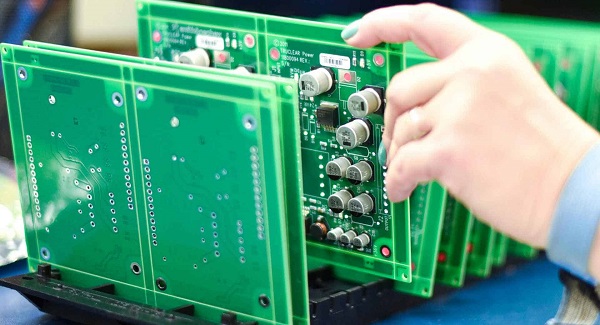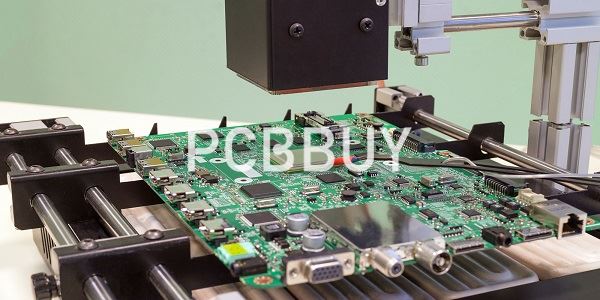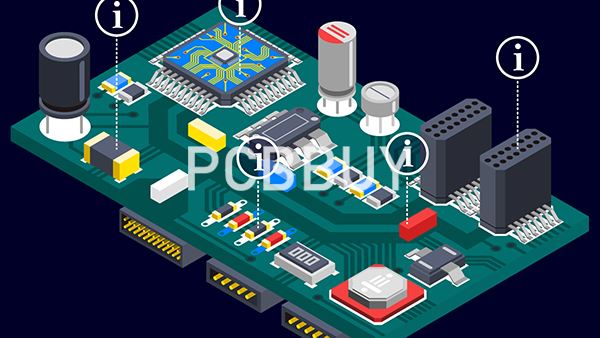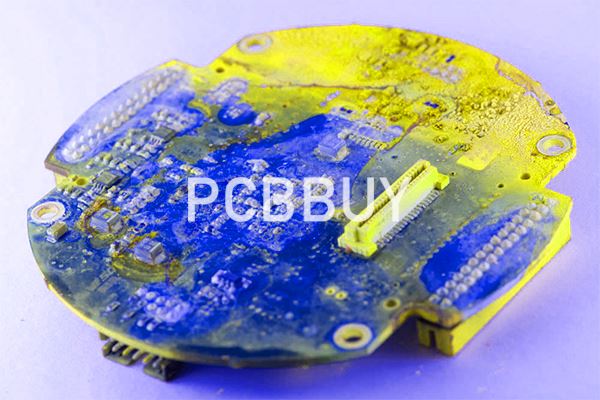How to Reduce Ground Bounce in PCBA Process through 5 Effective Methods?
By:PCBBUY 11/22/2021 09:43

It is not possible to achieve electrical balance without stabilizing the ground or signal reference. This can be a difficult task for complex boards where several signal types are present. Employing good grounding techniques, such as using sufficient numbers of ground planes, arranging them to shield EMI, and connecting to chassis ground from a single point will help address most ground imbalance causes. Ground bounce, however, is an inherent problem for components like ICs and transistors, and additional measures must be taken to mitigate its effects.
If you are going to learn the knowledge of ground bounce in PCBA process, please check and read the content for more information in this passage.

What is the basic information of ground bounce in PCBA?
Three inductors are shown in the equivalent circuit for a full-bridge switch. The inductor symbols represent the package inductance (inductance inherent in an IC's package design) and the circuit output is connected to some components (it is not allowed to float).
Imagine encountering this circuit after the input is held at logic low after a long period of time. This state would have caused the upper transistor to connect the output of the circuit to Vss through the upper MOSFET. After a suitably long period of time, stable magnetic fields would exist in LO and LA, and the potential difference for ΔVO, ΔVA, and ΔVB is 0 Volts. A small amount of charge will be stored in the trace.
What is the importance of ground bounce in PCBA?
At the moment that the input changes state, the output and MOSFETS are no longer in a defined state—they are somewhere in between. The result might be false switching or double-switching. Additionally, any other parts on the IC die that share the same Gnd and Vss connections will be impacted by the switching event.

But the effects of ground bounce are not limited to the IC die. Just as ΔVB forces the MOSFET source potential above 0V, it forces the circuit Gnd potential below 0 V. Most of the images you see depicting bounce show the external effects.
What are the problems of ground bounce in PCBA?
With the signal voltages not returning to their ground level reference, there is extra current in the signal that creates noise. When a lot of switching is happening simultaneously, a lot of noise is being produced. This ground bounce noise can have a negative effect on the device as it is switching by creating false switching or double-switching. If the problem is not corrected, it could disrupt the circuit or even shut down the device.
One example of the switching problem would be a device whose ground level reference is artificially high due to ground bounce. It receives what should be a signal at a high state, but it misinterprets it as a low signal because its ground reference level has bounced to a higher level than the incoming signal. And if that same component were to send out a low signal but the ground level has been incorrectly shifted high, the receiving component may misinterpret the intended low signal as high instead. To correct these problems, the PCB designer needs to incorporate signal and power integrity practices in their layout.
How to reduce ground bounce in PCBA?
PCB designers are always on the lookout to find tips to reduce ground bounce. The most common method is to place a bypass capacitor on the circuit. A bypass capacitor effectively bypasses the voltage spikes and power supply noises. It is connected between the VCC and GND pins of an IC package.

1. Minimize return paths
The shorter the return paths, the lower the inductance between components will make the ground plane. Therefore, digital components should be placed directly over digital ground areas and mixed-signal devices should be positioned above bridges between digital and analog ground areas, whenever possible.
2. Use short component leads
Using packages with shorter component leads reduces the series inductance. This is also accomplished by using BGAs and vias. Decoupling capacitors should also be used to funnel disturbances to ground as quickly as possible. It is probably a good idea to use these for all IC and transistor ground pins.
3. Use multiple vias
Another way to quickly dissipate disturbances or noise from your circuits is to use multiple vias to route to ground.
4. Offset switching, if possible
The parasitics that cause ground bounce may not be able to be completely eliminated; however, by offsetting switching times, you can minimize the extent or magnitude of the ground bounce.
5. Use slower switching components, if possible
This technique should be used in conjunction with offsets to allow damping to occur prior to the next switching event. This will prevent it from being added to the noise that may be already present.
Electrical balance is always a concern when designing and building PCBAs. In some cases, the variations may be negligible and dedicated actions are not warranted. These are rare, as many boards today include digital components and process high-speed signals. Therefore, designing and manufacturing to reduce ground bounce should be part of your development process.
Industry Category











